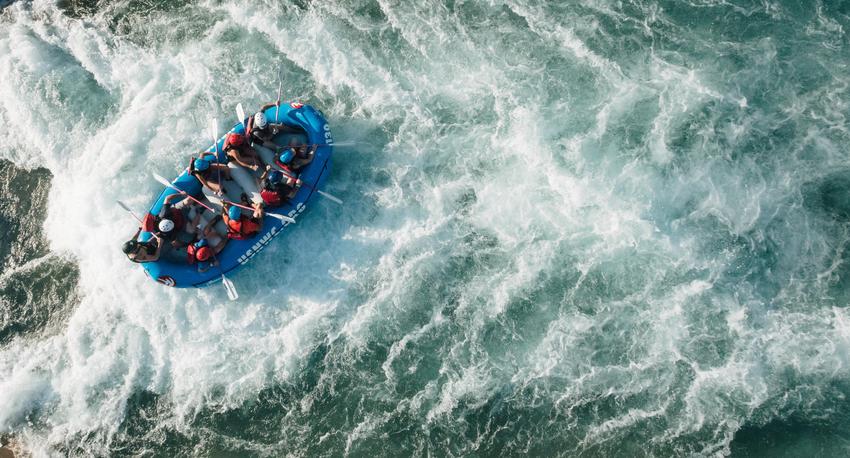The Ultimate Adventure: Water Rafting Tips and Tricks
Embarking on a water rafting experience is a thrilling experience that demands a blend of skill, prep work, and respect for nature's awesome forces. As the rush of the river moves you ahead, navigating with spins and turns, the art of water rafting introduces itself as a test of both physical expertise and psychological skill.
Important Equipment for Water Rafting
To guarantee security and comfort throughout water rafting excursions, it is vital to gear up oneself with the crucial equipment customized to this adventurous task. Additionally, a sturdy helmet is important to secure against head injuries, particularly in rough waters or if thrown off the boating.
Additionally, appropriate shoes is vital for keeping excellent hold and shielding the feet from unsafe surfaces or sharp rocks. Neoprene booties or water shoes are recommended for this purpose. It is additionally suggested to put on quick-drying clothes, such as a wetsuit or rash guard, to control body temperature and prevent hypothermia in cool water conditions.
Finally, a reliable paddle is necessary for steering with the water successfully. It must be lightweight yet resilient to stand up to the rigors of rafting. By spending in these necessary pieces of gear, rafters can appreciate their experience on the water with self-confidence and satisfaction.
Picking the Right Rafting Path
When preparing a water rafting adventure, picking the proper rafting route is critical for a pleasurable and safe experience. Aspects such as the degree of difficulty, water problems, and the length of the route need to all be considered prior to embarking on your trip.
Most importantly, assess your team's ability level and experience. Different rafting routes are classified based upon trouble degrees varying from Course I (simple) to Course VI (incredibly tough and dangerous) It is vital to select a path that aligns with the capabilities of all participants to ensure everyone's safety and satisfaction.
Additionally, take into consideration the water conditions of the course. Some paths might have tranquil waters suitable for beginners, while others might have strong currents and difficult rapids that call for even more innovative abilities. Looking into the water degrees and prospective threats of the course beforehand can assist you make an informed decision.
Lastly, consider the size of the rafting course. Longer courses may need even more time and endurance, so choose a route that fits within your group's duration and physical capacities. By very carefully choosing the right rafting path, you can establish yourself up for a exhilarating and memorable experience on the water.
Safety And Security Preventative Measures on the Water
Thinking about the value of picking the best rafting route for a delightful and risk-free experience, it is necessary to focus on safety preventative measures on the water to minimize potential risks and guarantee an effective experience. Before embarking on a water rafting trip, make sure all individuals wear correctly suitable individual flotation protection gadgets (PFDs) and helmets to secure against mishaps. It is critical to listen attentively to the overview's safety and security instruction, which usually covers paddling methods, what to do in instance the raft turns, and just how to aid others have a peek at this site if needed. Keeping interaction with the guide and fellow rafters is important throughout the trip to coordinate movements and respond promptly to any type of signals or instructions. In the occasion of somebody dropping overboard, comply with the guide's instructions for swift and effective rescue treatments. Be aware of the water problems, such as rapids and obstacles, and adjust your paddling methods appropriately to browse safely through the course. By sticking to these safety and security precautions, you can boost the general experience and minimize possible risks while water rafting.
Mastering Paddling Techniques
Developing efficiency in paddling strategies is vital for navigating with differing water problems and making certain a successful water rafting experience. White Water Rafting Colorado. Appropriate paddling not just helps in guiding the boating successfully but likewise adds to the general control and synergy needed for a secure and enjoyable journey
This stroke entails dipping the paddle blade totally right into the water and pulling it back together with the plethora, providing propulsion and steering. By understanding the forward and in reverse strokes, rafters can properly manage the rate and direction of the plethora.
:max_bytes(150000):strip_icc()/salmon-river-rafting-IDAHORAFTING0422-abee1743fbe0478da2769038265d321a.jpg)
Tips for Handling Rapids Like a Pro
To excel in navigating difficult river conditions, skilled water rafters apply their mastered paddling methods with accuracy and skill when taking care of rapids like skilled specialists. This rhythm helps the plethora maintain its training course and stability amidst the stormy waters.

Final Thought
Finally, water rafting calls for essential gear, mindful path option, security precautions, understanding paddling techniques, and taking care of rapids with proficiency (White Water Rafting Colorado). By following these tricks and ideas, adventurers can make sure a pleasurable and successful rafting experience on the water. Bear in mind to always prioritize safety and be planned for the difficulties that come with browsing with rapids. With method and understanding, any individual can come to be a competent water rafter.
:max_bytes(150000):strip_icc()/whitewaterrafting-ebdeb8c379e0418ab45d2fee2148d57f.jpg)
Thinking about the significance of choosing the right rafting path for a safe and satisfying experience, it is essential to prioritize safety precautions on the water to alleviate potential dangers and guarantee a successful journey. Inevitably, developing paddling techniques is key to a effective and awesome water rafting experience.
In conclusion, water rafting calls for crucial equipment, cautious course selection, security preventative measures, understanding paddling strategies, and taking care of rapids with proficiency.